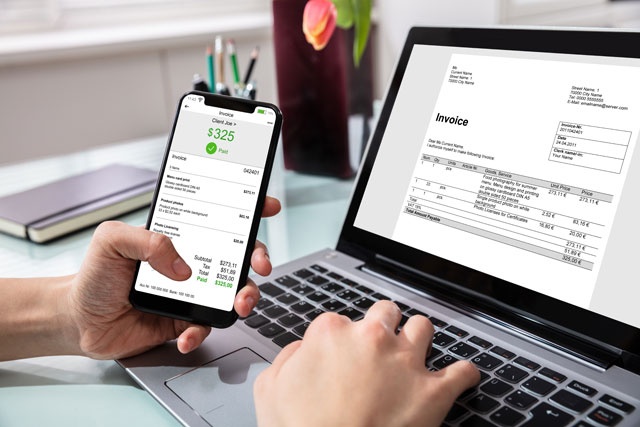From assessing an individual's creditworthiness and likelihood that they will make regular payments on their loan, to determining the borrower's interest rate and specific interval payment amounts, the loan officer plays a vital role in qualifying the borrower and securing the integrity of the loan.
As a loan officer guiding a client through the lending process from application and review to processing and approval, you will want to keep in mind the two primary purposes of your role:
1. Streamlining the process for the individual.
2. Providing information regarding lending options based on the client's creditworthiness and the desired loan amount.
Sometimes this phase of the process is facilitated by a loan packager, one who helps the prospective borrower get the lending process in motion.
To begin the process, the client needs to gather the necessary qualifying documents:
� Pay stubs for the past 2-3 months.
� W-2 forms for the past 2 years.
� Information regarding any outstanding debts.
� Recent bank statements.
� Tax returns for the past 2 years.
� Proof of other sources of income, for instance documentation pertaining to investments and other assets.
� Itemized account of the money being requested and the intended purpose.
Within the initial phase, the borrower will begin organizing their documents and assessing the lending market as to where to seek an applicable loan.
At this point in the process, loan packagers can work with borrowers to ensure the following:
� Borrower's financial package is complete and accurate.
� Borrower fully understands the lending process and industry practices.
� Prospective borrowers learn how to talk to prospective lenders.
� When applicable, suggest alternative financing options.
The next step in the lending process is when the loan officer or lender steps in to review the loan application. At this time, the loan officer or lender will order a scoring report on the applicant's credit history, as well as a variety of other reports dictated by the specific nature of the loan, for instance, a professional appraisal of a property should the individual be seeking a mortgage loan.
With respect to credit scoring, it is important to bear in mind the following ideas:
1. Lenders frequently rely on Credit Scores, or more specifically, scores obtained from credit bureaus, to help assess the likelihood of which a business or individual will not only repay a loan but whether it will be on time or delayed.
2. Credit Scores essentially act as a snapshot pointing out an individual's credit risk potential at a given point in time.
3. The Credit Score serves as a summary of the borrower's credit report reduced to a numerical measurement used to indicate the borrower's ability to manage credit.
4. The Credit Score is just one method used by the lenders to make a credit decision. For example, in addition to analyzing a prospective borrower's credit scores and financial statements, loan officers also sometimes refer to the individual's key financial ratios. For example, RMA (Robert Morris Associates) ratios are sometimes a tool used by lenders when unsure of whether to grant a loan and/or in establishing the terms and conditions of that loan.
5. Credit Scores* are based on the records compiled by the credit bureau and summarizes the information reported each month by the borrower's creditors (that is, the amount of existing credit and payment history).
*Succinctly put, a person's credit score is the numerical summary of their credit record. It is calculated based upon the timeliness in which one pays their debts (for example, credit cards and revolving department store accounts, utility payments, and car payments).
An individual can improve upon their credit score by consistently paying all open trade lines in a timely manner and by paying off the majority (or all if possible) of what is owed on credit cards.
Credit Scores are derived from five (5) major categories of credit information. In the order of importance they include:
1. Types of credit the individual is presently using, for instance credit cards, outstanding loan or others, .
2. Chronic patterns of late payments, delinquencies, and bankruptcies.
3. Amount of outstanding debt.
4. Length of time individual has had credit.
5. Number of recent applications submitted for new forms of credit.
While some loan officers may rely upon their own internal credit scoring model, others may derive reports on their clients from one of the three major credit reporting agencies:
-
Experian (formerly TRW).
-
Equifax.
-
TransUnion.
There are different methods of calculating credit scores. FICO� is a credit score developed by Fair Isaac Corporation, the entity responsible for developing software used in conjunction with the three aforementioned major credit bureaus. FICO� scores are used by many mortgage lenders that use a risk based system to determine the possibility that the borrower may default on financial obligations to the mortgage lender.
Based upon objective credit report data, FICO� scores, ranging from 300 to 850, indicate an applicant's associated future risk.
The basic rule of thumb is the lower the score, the greater the risk.* FNMA prime loans go to borrowers with the following:
-
Credit scores above 620 (credit scores are between 350 and 850 with a median in the U.S. of 678 and a mean of 723),
-
Debt-to-income ratios no greater than 45% (meaning that no more than 45% of the gross income pays for housing and other debt), and
-
Combined loan-to-value ratios of 90% (meaning that the borrower is paying a 10% down payment).
*Note: There are no absolute rules where lending is concerned. Hence, as there is no official cutoff score, each loan officer comes up with their own strategy, or relies upon the lending institution with which they are affiliated, for dealing with acceptable risk.
While it may be a little confusing, there are actually three different FICO� scores, one for each of the three major U.S. credit reporting bureaus, and each with their own individual name:
-
Experian (formerly TRW) BEACON.�
-
Equifax Experian/Fair Isaac Risk Model.
-
TransUnion FICO� Risk Score, Classic.
Though developed based on identical methodologies and tests, FICO� scores from the three major credit bureaus differ because of the fact that the model for each bureau is unique.
While all lenders are likely to have their own method for facilitating the application process, many take the stance that credit scores alone do not work. This is because of the following:
-
Failure to consider the individual's circumstances, capital, capacity, collateral, or the loan terms, and conditions.
-
Tendency to overstate or understate risk.
Yet, regardless of whether a loan officer prefers to form a lending decision based solely upon an individual's credit history or only partially, it is important that they have sound information from which to make a well informed decision.
Once the loan officer or lender has received all of the required documentation, they can begin the process of making an objective decision entailing a) whether or not to grant a loan, b) if willing to grant, the specific amount of the loan*, and c) the associated repayment terms (duration, regular interval schedule of payments, and so on) of the loan.






























